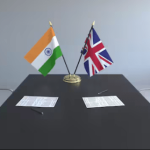Russia’s military has declared it has regained full control of the western Kursk region — a claim firmly denied by Ukraine.
Top Russian commander Valery Gerasimov stated the last village held by Ukrainian forces had been recaptured, ending Kyiv’s incursion eight months after it began.
Speaking during a video conference with President Vladimir Putin, Gerasimov confirmed: “Today, the last settlement in the Kursk region, the village of Gornal, has been liberated from Ukrainian forces.”
The commander also hailed the “heroism” of North Korean troops who, for the first time, have been publicly credited with supporting Russian operations. Putin, responding to Gerasimov, was scathing about Ukraine’s efforts: “The Kyiv regime’s adventure has completely failed.”
Ukraine Dismisses Russian Claims as Propaganda
Despite Moscow’s announcements, Ukraine insists it remains active in Kursk. Kyiv’s military general staff described the situation as “difficult” but maintained that Ukrainian forces were still operational in both Kursk and Belgorod.
In a statement posted on Telegram, Ukraine’s forces said they were continuing their incursion across the Russian border. They labelled Russia’s boasts as mere “propaganda tricks”.
Meanwhile, the US-based Institute for the Study of War (ISW) reported ongoing fighting in north-western Belgorod as of 25 April. Their analysis noted: “Russian forces recently advanced near the international border in Kursk Oblast as part of efforts to push Ukrainian forces from their limited remaining positions in the area.”
Heavy Losses and Escalation
According to Gerasimov, over 76,000 Ukrainian troops have been killed or wounded during the battle for Kursk, though these figures have not been independently verified. Russia now claims it controls several settlements in Ukraine’s north-eastern Sumy region, bordering Kursk, pushing its frontline deeper into Ukrainian territory.
Ukrainian forces, faced with overwhelming Russian troop numbers and relentless drone assaults, have been gradually pushed back in recent months.
Ukraine initially launched the Kursk operation last August, aiming to create a buffer zone to protect its eastern front. However, with heavy losses mounting, Kyiv’s grip on the region has weakened.
Peace Talks Amid Continued Bloodshed
Tensions between the warring sides continue, even as whispers of peace talks circulate. US President Donald Trump claimed recently that Russia and Ukraine were “very close to a deal” after talks involving his envoy, Steve Witkoff, and President Putin.
Yet, Trump later expressed doubts about Putin’s willingness to end the conflict, referencing recent Russian missile strikes on Kyiv that killed at least 12 people and injured dozens more.
Following a symbolic meeting with Ukrainian President Volodymyr Zelensky at the Vatican, Trump’s tone remained cautious.

Zelensky, meanwhile, remains steadfast. Speaking to the BBC, he pressed for a “full and unconditional ceasefire” as a precondition for any potential deal.
Despite mounting international pressure, Zelensky continues to reject any concessions, including the possibility of ceding Crimea, annexed by Russia in 2014.
Ukraine had hoped its territorial gains in Kursk might serve as leverage in future negotiations. However, with Russia’s latest advances, that bargaining power seems to be slipping away.
The battle for Kursk marks yet another fierce chapter in the ongoing war. With Russia tightening its grip and Ukraine refusing to back down, the prospect of a peaceful resolution still appears distant. As talks stir hope, the realities on the battlefield paint a grim picture of a conflict far from over.






